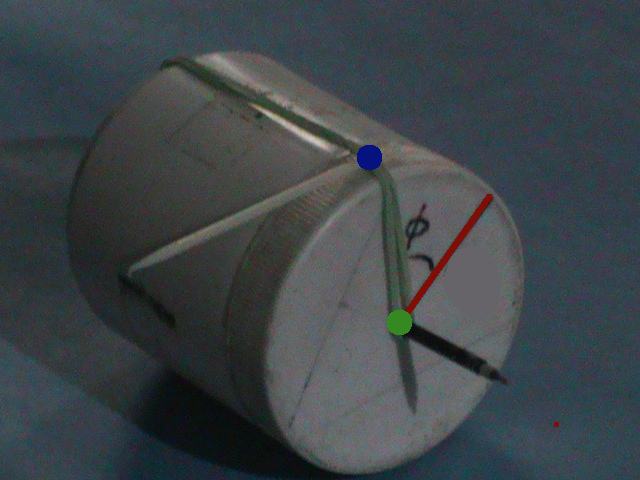विज्ञान लेखन
Cylindrical Co-ordinate System
A co-ordinate system is used to define a point in space in a unique manner.
- Cartesian system assumes that the space has length, width and breadth. So a point is defined by three distances from the reference point called "origin". The three shortest distances when represented by straightlines are perpendicular to each other.
- Cylindrical system considers:
- Shortest distance of the point from the vertical axis. This is known as "rho".
- Shortest vertical distance of the point from the origin known as z.
- Angle made by the line joining the point and the vertical axis with reference x-axis. This is known as phi.
- Spherical system considers:
- Shortest distance of the point from the origin. This is known as "r".
- Angle by which the point is elavated from the horizontal plane. This is known as "theta".
- Angle by which the point is shifted from the x-axis. This is known as "phi".
A simple model for cylindrical system

The above image shows a simple model which helps to understand the cylindrical co-ordinate system.
Anyone can make it using simple things.
Materials Used
- A cylindrical plastic bottle.
- A ballpen refill as shown in the image.
- A rubber-band.
- A toothpick.
Assembly
You can assemble the cylindrical co-ordinate system model quickly. These are the steps:
- Drill small holes at the centres of lid and the bottom of the cylindrical bottle.
- Through these holes insert the ballpen refill as shown.
- Now attach the rubber band at the two ends of the refill as shown.
- On the bottle lid, mark reference axis -x with red colour and angle phi with black colour.
- Insert the toothpick where the rubber band turns to the cylindrical surface. The toothpick must be tangential to the cylinder lid as shown.
- Your model is ready.
To use the model
- Rotate the rubber band with respect to the refill (i.e. z-axis). This way you are changing the angle phi.
- Measure the angle between the rubber-band and the marked x-axis. This is phi.
- Distance of the point, where the toothpick is tangential (the blue spot), from the z-axis is "rho". It is the length of the rubber band upto that point from z-axis.
- You can assume some point on z-axis to be the origin (here it is the green spot). Vertical distance of the point of contact of the toothpick from the origin is the z-coordinate.
This model is very useful to understand and visualise electrostatic and electromagnetic fields.
Please note
- The direction of the "phi" axis is the direction of the tangent i.e. the toothpick.
- The direction of the z-axis and x-axis are fixed.
- At all points in space, these three axes are perpendicular to each other.
मुख्यपान
संपर्क
आमच्याशी संपर्क साधाः
Contact us here:


